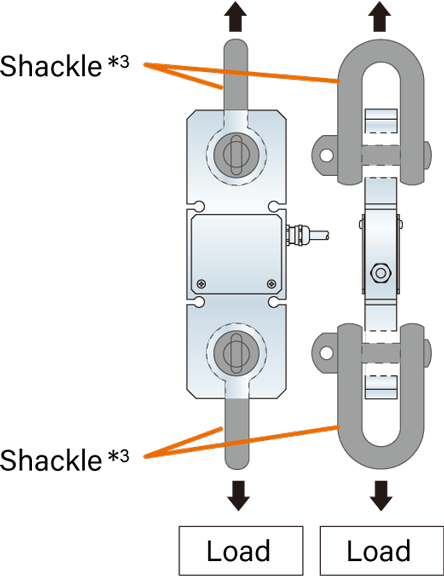What is a Strain Gauge Load Cell?
Principles of strain gauge load cells
A strain gauge load cell consists of a combination of a metal that deforms when a force is applied, and a sensor whose resistance changes when it deforms. Metals that deform when a force is applied are called flexure elements, while sensors whose resistance changes when they deform are called strain gauges. A strain gauge exhibits the following characteristics with respect to deformation.
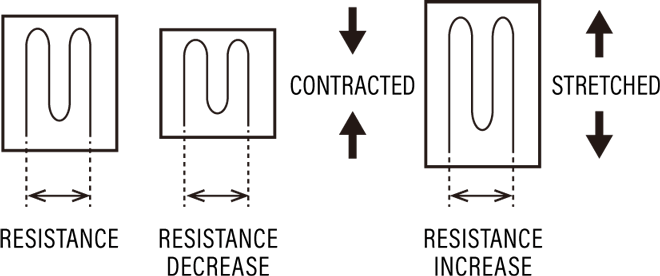

Wheatstone bridge circuit and rated output
The resistance change in a strain gauge is so small that it is converted to a voltage using a Wheatstone bridge circuit.
When the resistance values of R1 × R3 and R2 × R4 are equal, the output voltage of the Wheatstone bridge circuit is 0 V. When the resistance values are not equal, the output voltage changes accordingly. The rated output values in the matrix table represent the output voltages for an excitation voltage of 1 V when the strain gauge load cell is subjected to a force of the rated capacity.
represent the output voltages for an excitation voltage of 1 V when the strain gauge load cell is subjected to a force of the rated capacity.

Types of strain gauge load cells
Compression Type
The most common type of strain gauge load cells. Available in various capacities and sizes.
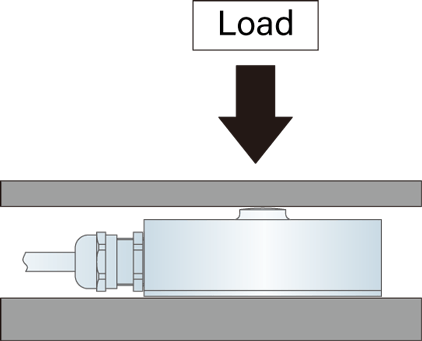
Tension/Compression Type
Used by connecting rod ends*1 or eyebolts at the top and bottom. When used for compression, care must be taken because there are two sides, the fixed side and the load side.
Rod end: A type of bearing consisting of a spherical ball enclosed within a housing. This construction allows for complex movement.
*1. Prepared by user
*2. Consult us for more information.
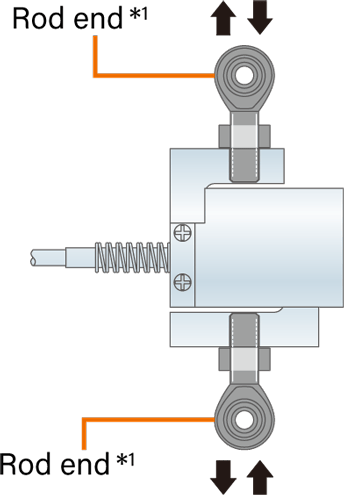
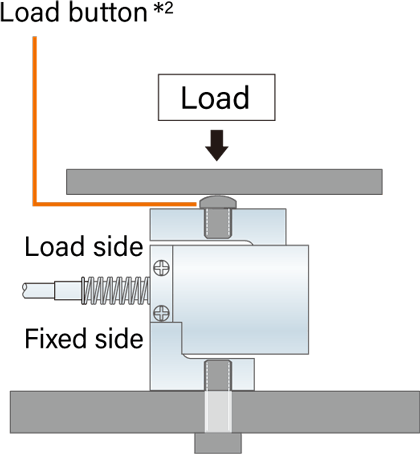
Beam Type
The beam type is used when the strain gauge load cell extends from the frame or housing. Typically, a set of three to four beams is used for weighing or the like.
*2. Consult us for more information.
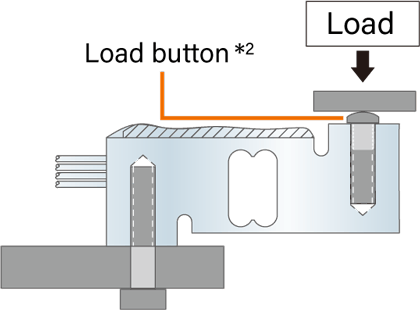
Tension Type
Strain gauge load cells for cranes. Used by connecting shackles*3 or the like.
Shackle: A metal fitting used to connect a wire rope or a sling with a load.
*3. Prepared by user
